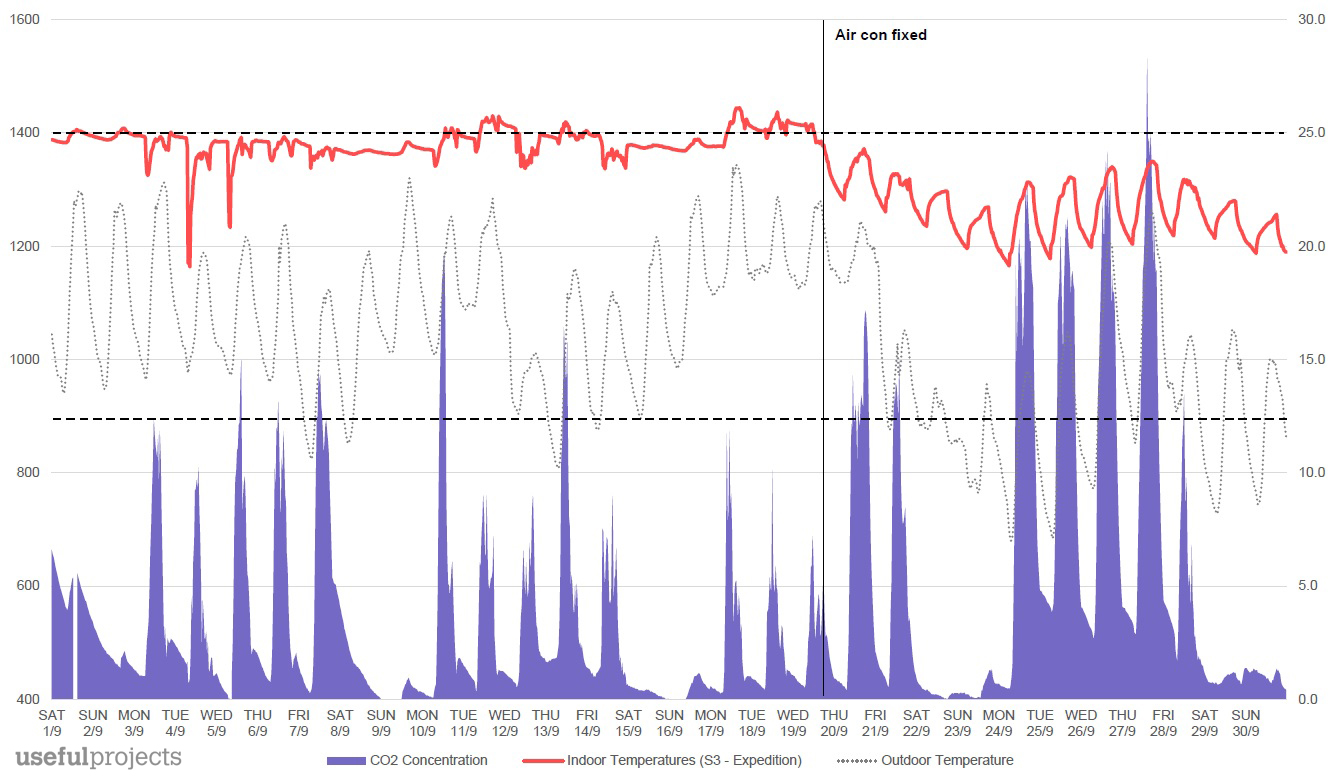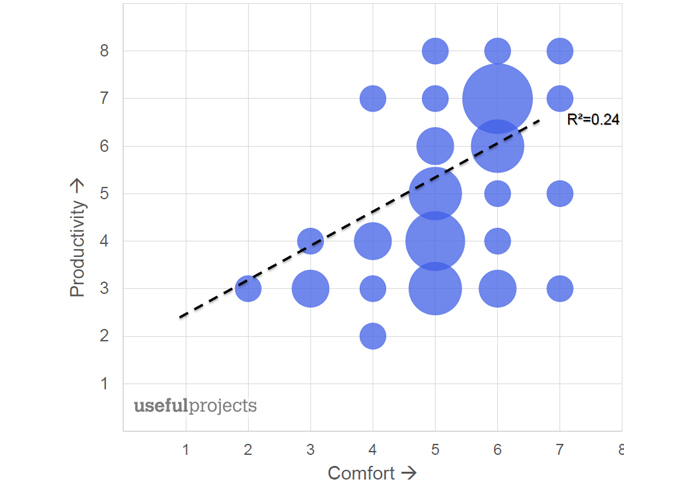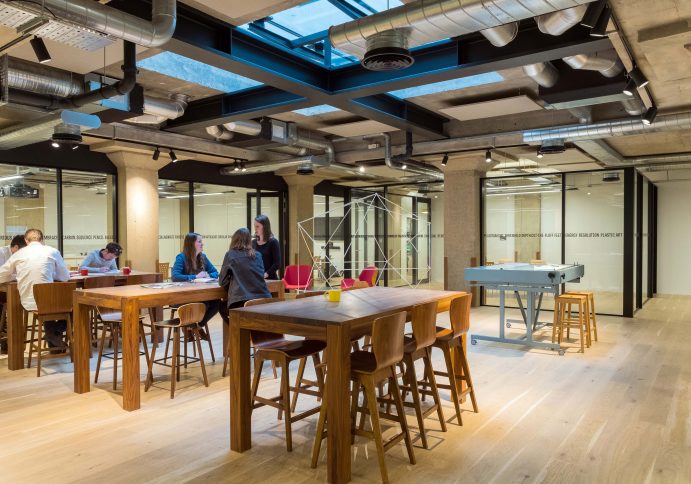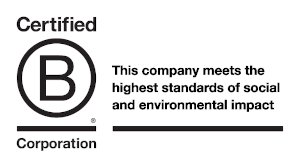In August 2016 Useful Projects and the other Useful Simple Trust (UST) companies relocated to a new office in The Clove Building, near Tower Bridge. This gave us the opportunity to design our own office around our specific needs and ethos. The result is a sustainable and modern open plan workspace, which achieved SKA Gold certification at a cost of only £35 per square foot.
Moving to a new home also provided another opportunity: conducting a Post Occupancy Evaluation of our newly inhabited space. Post Occupancy Evaluation (POE) is the process of assessing the performance of a building after it has been occupied. This information can then be used to make improvements to the way the building is used, and, in office environments, to improve staff wellbeing and business performance.
POE typically employs multiple methods to gather information: occupant surveys, focus groups and monitoring of internal environmental conditions (e.g. temperature, humidity & air quality). The objectives are simple: check if the space is performing as it was designed to and assess the satisfaction of its occupants. While POE is increasingly becoming more valuable for architects and developers, it is still rare in the construction industry[1].
We have been conducting a continuous POE in our workspace for over a year, including monitoring of environmental conditions (temperature, humidity, air quality) and energy use. We also gathered feedback from occupants via a staff survey. For the latter, we used the BUS Methodology questionnaire, a proprietary POE tool that enables us to benchmark the performance of our own workspace against other UK offices. .
We are pleased to share some of our results and 5 key lessons that we have learned from conducting our own POE:
It is an useful validation tool for building and interior design
When a building is finished, it is important to verify if it is performing as it was designed to. Large discrepancies between the designed and actual building performance can lead to higher running costs, significant impacts on the occupants’ health and wellbeing, and a reduction in overall satisfaction. POE can help us understand how the building operates and how effectively the design aspirations have translated into the final built form.
Our POE results show that most of our colleagues are extremely happy with the environmental conditions in the space, which scored very well in variables related to overall comfort, design quality, image of the office to visitors, lighting quality, and air and temperature conditions during winter time.
However, we also discovered that, although present in smaller numbers, two main issues were responsible for many complaints from our colleagues: noise levels inside the office, and the air quality and temperatures during summer time. High noise levels are a common concern in open plan office environments [2]. We believe that the concerns about high temperatures might have been influenced by the fact that our air-conditioning system broke down during the September week when we conducted the survey!
Despite these issues, overall, occupant satisfaction in the UST office is in the top 30% of the buildings in the BUS database, which is a great indication that our colleagues are very satisfied with the workplace environment and testament to the skill and determination of the design team to create a positive working environment for the company.
It can highlight the impact of faulty infrastructure
External conditions out of our control are always an issue when conducting surveys. In our case, the air conditioning broke when we were conducting the survey during the warm mid-September.

Although we recognised that this event might end up in more comments regarding high temperatures, we were able to pinpoint at which point the high temperatures started to be noticed. Before breaking, the air conditioning was maintaining the maximum temperature at 25°C. From our observations and monitoring, it became clear that as soon as the temperatures went over this threshold, people started to notice and complain. This does not mean that people did not feel hot or warm at 25°C, but that up to this point expectations of comfort in the workplace were being met.
It is a tool to evaluate and increase workplace productivity
Another benefit of conducting a POE in your office environment is the potential to influence and increase productivity. As employee costs in the UK are typically 90% of a company’s spending [2], it is important that every business ensure that their work environment promotes engagement and productivity.
By analysing our survey results in more depth, we found a correlation between increased comfort and people’s perception of their own productivity (R²=0.24, p<0.05). This highlights the value of striving to provide a space that is as comfortable as possible for the maximum number of staff.

Another finding that could help us to increase our productivity comes from the CO2 level monitoring. We found that the CO2 levels during occupied hours, although being within an acceptable range for most of the time, can reach a point where there is a risk of impact on cognitive ability. The CO2 concentration is higher when the office reaches high temperatures, as the windows tend to be closed and less fresh air enters the space.
To minimise this, we are currently monitoring CO2 levels under various conditions in order to optimise our HVAC settings so they provide sufficient fresh air without compromising temperature and ambient noise levels.
It can provide costs savings
One of the advantages that POE can bring to an office is cost savings. This depends on what is monitored, and can involve electricity, water and waste, among others.
In our case, temperature monitoring revealed that after our air conditioning system was repaired, internal temperatures seemed to be fluctuating much more than previously. We also noticed that during the repair, factory settings had been restored, which meant that the space was being conditioned unnecessarily, e.g. during the weekend. We adjusted the air conditioning to ensure optimal temperature levels and profiles, lowering our cooling energy use by about 30%.
It can contribute to meaningful staff engagement
We organised a lunchtime session to share our findings with colleagues which led to a lively discussion about how we use our workplace environment. The outcome of the session was that we generated several action points around possible interventions that could be used to enhance the space further and help it adapt as our working needs continue to evolve. We also gathered additional information that wasn’t captured in the survey, enabling us to get a deeper understanding of what was going on. Following this session, the POE team have been engaging with the company leaders and HR to develop a plan for implementing some of the suggestions.
Engaging with staff in this way following a POE is vital to understanding the workplace environment as a whole and to give appropriate recognition to people’s experience; it brings the findings from the theoretical realm to the real world – resulting in clear and tangible actions and outcomes.
[1] https://www.som.com/ideas/research/post_occupancy_evaluation_survey_report
[2] https://www.ukgbc.org/sites/default/files/Health%2520Wellbeing%2520and%2520Productivity%2520in%2520Offices%2520-%2520The%2520next%2520chapter%2520for%2520green%2520building%2520Full%2520Report_0.pdf




